
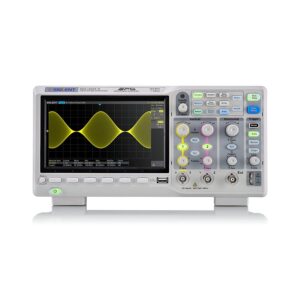

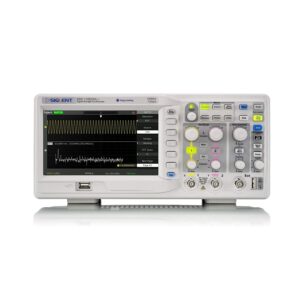
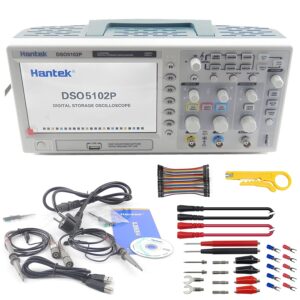
Customer’s Choice: the Best Rated Oscilloscopes for Audio
[survey_answers id=”2059205497″ style=”plain” data=”score”] users answered this survey. Please help us improve this review!
[survey_answers id=”2059205497″ style=”piechart” legend=”true”]
An o-scope is an electronic test tool that enables the consumer to observe variable signal voltages on a monitor. It may also be used, based on its characteristics, to show other forms of signals that are translated to voltages, such as vibration or tone. The sensor normally indicates the form of an input wave, since these waves and their variations can be detected and electrical currents tested by the consumer.
O-scopes are used in different fields, ranging from research, telecommunications, and medicine to automobile and engineering.
Also, oscilloscope for audio systems are widely used in experimental work and electrical equipment repair (e.g., amplifiers). Second, the special-purpose o-scopes are equipped for particular uses, such as for showing waveform in an electrocardiogram or for studying the ignition mechanism in automobiles.
Make sure to read the following reviews with pros and cons for 5 different oscilloscopes for audio devices including car audio. The buyer’s guide and comparison table are also included for assistance.
Rigol DS1054Z Digital Oscilloscopes– the best for features!
 It is an inexpensive o-scope with many helpful features for the needs of a professional hobbyist, including Ethernet, USB, triggers, and storage solutions, as well as realistic applications and decent bandwidth. For people who seek the perfect combination of price and characteristics, it’s the finest o-scope.
It is an inexpensive o-scope with many helpful features for the needs of a professional hobbyist, including Ethernet, USB, triggers, and storage solutions, as well as realistic applications and decent bandwidth. For people who seek the perfect combination of price and characteristics, it’s the finest o-scope.
Owing in part to the easy-to-learn interface and versatility of its controls and functions, this is also an extremely intuitive DSO.
Pros
- Great build quality;
- Budget-friendly;
- Good for beginners;
- Triggers to WiFi, Ethernet;
- Versatile;
Cons
- Interface lags;
- Only vertical setting control;
- Loud;
For home and school use, it’s an excellent option too. For such an inexpensive scope, the triggers perform great, but they may sometimes be a little finicky.
Siglent Technologies SDS1202X-E Oscilloscope– the best bang-for-the-buck!
 With simpler measurement and modifications and an intuitive dial interface, the Siglent SDS1202X-E is both a technical and entry-level tool for newbies, making it really quick to understand.
With simpler measurement and modifications and an intuitive dial interface, the Siglent SDS1202X-E is both a technical and entry-level tool for newbies, making it really quick to understand.
A DSO is an immensely valuable method for those new to the technical career that needs electronic signal capture and documentation for thorough analysis and contrast of various networks.
The SDS1202X-E is a genuinely impressive o-scope for someone under $400 to launch their journey into DSOs but still offers ample bandwidth to examine complex signals.
Pros
- Portable;
- Non-reflective LCD;
- Great bandwidth range;
- Affordable;
Cons
- Only 2 channels;
- Only entry-level uses;
You can find the SDS1202X-E very simple and intuitive to work with. With many useful roles and features, it is well fitted.
Hantek DSO5072P Digital Oscilloscope– the best for the display!
 This o-scope has a broad 7-inch LCD color monitor and runs at a bandwidth of 70 MHz. Many consumers like its portability and enjoy the built-in support menu and 4 FTT standard math features.
This o-scope has a broad 7-inch LCD color monitor and runs at a bandwidth of 70 MHz. Many consumers like its portability and enjoy the built-in support menu and 4 FTT standard math features.
Its trigger modes are applied to its functionality that will enable you to come up with accurate edge/pulse data, selectable width/line, film, slop, overtime, etc. This system will provide you with consistent results without any trouble.
Pros
- Includes 10x probes;
- In-built menu;
- Self-calibration;
- Large 7-inch LCD;
Cons
- Bulky;
- Flimsy;
- Only 2 channels;
- Includes a euro cord and adapter;
A great option for extreme hobbyists. This tool has several qualities that can benefit you a lot but has a price that can be afforded by any DIYer.
Siglent Technologies SDS1102CML+ Digital Storage Oscilloscope – the best for accuracy!
 The Siglent SDS1102CML packs an excellent value at a relatively reasonable price. It’s also one of the only scopes that have an adaptive mode that picks the right settings for you automatically and helps steady the signal.
The Siglent SDS1102CML packs an excellent value at a relatively reasonable price. It’s also one of the only scopes that have an adaptive mode that picks the right settings for you automatically and helps steady the signal.
Two probes come with the system and they are fantastic. Although we will not claim it’s strong enough for experimental use, the calibration is fairly decent as well.
Pros
- Affordable;
- Versatile;
- Simple controls;
- Fast and powerful;
Cons
- Lack of documentation;
- Need to install additional software;
It also enables LAN and USB write connections for image storage. You will also find that separate controls have been provided to any channel, which further increases the overall convenience of usage.
Hantek DSO5102P Digital Storage Oscilloscope– the best for calibration!
 The Hantek DSO5102P DSO is quite easy to use. The tool comes with a bandwidth of 100 MHz and a sample rate of 1 Gsa/s. Consequently, during the job, the sampling intensity can stay very high and can identify signals more quickly and easily.
The Hantek DSO5102P DSO is quite easy to use. The tool comes with a bandwidth of 100 MHz and a sample rate of 1 Gsa/s. Consequently, during the job, the sampling intensity can stay very high and can identify signals more quickly and easily.
A broad 7-inch monitor is included in the tool. Hence, displaying the signals would be easy for you. In addition, this device’s record duration is around 40K.
But the product comes with multiple trigger modes to make it simpler for you. The edge and distance, for instance, are selectable. Even, when you find it appropriate, you can film, slop, or overtime with it. It’s pretty straightforward to connect this to your PC or laptop.
Pros
- Great bandwidth range;
- Has a few trigger modes;
- USB host;
- A large display;
Cons
- Rough transition between the time scale and wave;
- Flimsy power button;
This entry-level o-scope has all the necessary features for an affordable cost.
The Buyer’s Guide
Oscilloscope for Car Audio
You can use the above oscilloscopes to tune your car audio amplifier. This will allow you to test the clipping output of your amp.
Just connect the probe lead ground to the – minus of the sub/amp speaker output, and alligator clip the center probe to the + plus of the speaker. Then set the range to auto or use 20 volts peak. This will be a sine wave from the head unit if you use a cd that generates continuous sin wave output.
Set your head unit volumes to about 75 – 80%, then play the cd, and you should see the sin wave on your scope. Turn up the gain on the amp until she starts clipping, then back off slightly. Your done!
You can also use a USB oscilloscope to measure car audio amps if you require portability.
Analog/Digital Oscilloscopes for Audio
Analog o-scopes are popular and affordable but digital devices (DSO) are more flexible and versatile.
DSO is a portable device with a very intuitive interface, storage, and printing options, high-resolution color LCD. They also have the maximum bandwidths and fastest performance and have nearly perfect measuring features.
The DSO’s can be completely integrated into the ATE systems through the use of a PC and its USB port. Connecting audio devices and oscilloscopes are both relatively easy.
Between an analog o-scope and a DSO, in terms of economy, functions and implementations, the latter is the better option.
Uses
In a large variety of analysis and troubleshooting conditions, certain monitoring methods may be used. This involves the analysis of potential faults in consumer devices, such as radios, audio amplifiers, as well as the recognition of the volume of noise in the circuit, the assessment of the form of the wave (e.g., circular, sinusoidal or complex) and the quantification of phase variations between different signals.
You can get an analog audio output from a PC by using a USB to 3.5 adapter. This allows you to interface the audio scope directly to an audio source.
Bandwidth
This applies to the strength of the highest signal that can travel through the front-end amplifiers. Most brands build their oscilloscopes to obtain a particular Maximally Flat Envelope Delay (MFED), a form of frequency response that offers as little undershooting, overshooting and ringing as practicable for excellent pulse fidelity.
But bear in mind, too, that only the MFED can be addressed as a target, but it can’t be entirely reached. Generally, pick an o-scope with a bandwidth that is at least 5 times greater than the maximum frequency of the signal to be calculated. However, you will have to choose, since o-scopes with high bandwidth are pricier.
Memory depth
In selecting the right one for your needs, the sampling rate’s interaction with memory depth is important. A strong sampling rate coupled with a limited memory ensures that only the device with the maximum sampling rate can measure a few time bases.
A 1K buffer memory, for example, will restrict the sampling rate of the device to only 5MS even though it can sample at 100 MS/s. Your buying choice would obviously be most influenced by the tech requirements. You have to be sure that, really, the o-scope you bought is fit for the purpose.
Video Tutorial: Rigol DS1054Z Oscilloscope Review Summary
Final Thoughts
The best audio o-scope for your needs should always be sufficient and only then helpful. In addition, it is also important to upgrade your skills with an o-scope, especially if it has some advanced features.

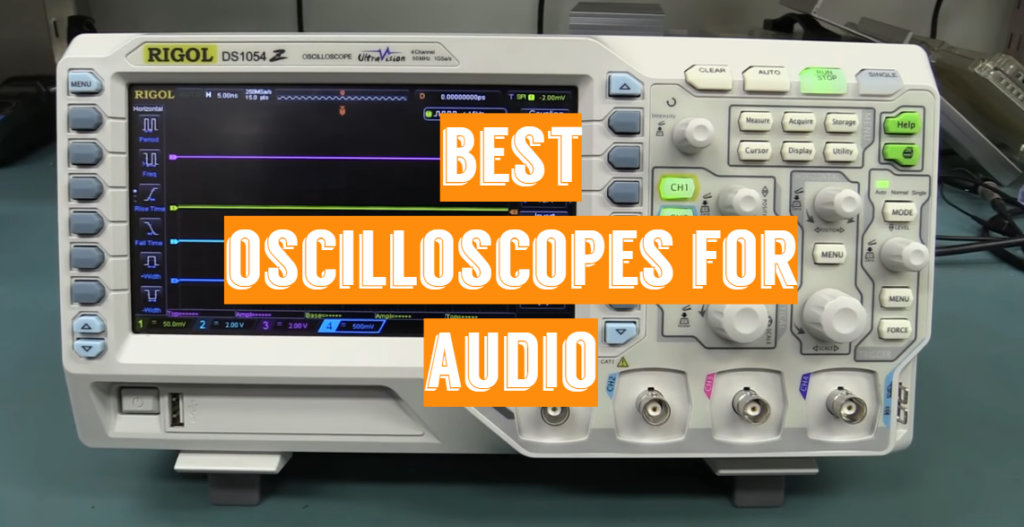

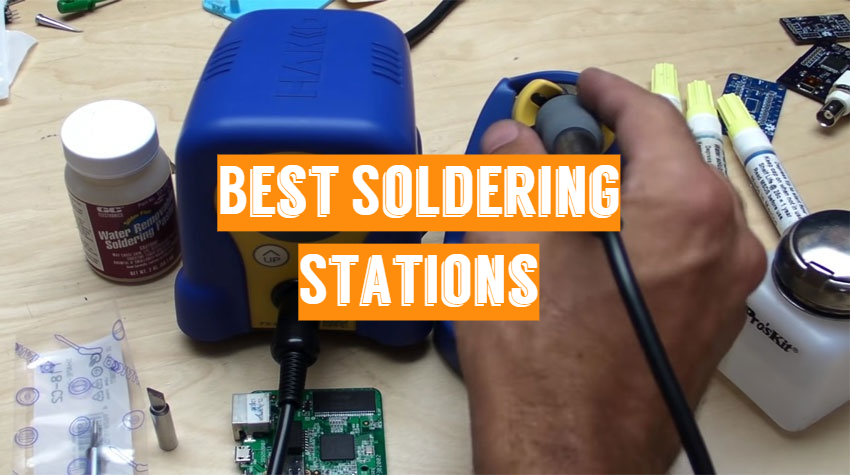
Hi! I have an honest FNIRSI-1014d review for you. In my view, it’s a great oscilloscope. In the realm of expertise, professionals are extremely critical of their flaws. I must argue that not everyone requires a top-of-the-line oscilloscope and that the majority of amateurs will be more than satisfied with this device: waveform storage and screenshot automation. Can store up to 1000 images and 1000 sets of waveform data inbuilt 1GB storage capacity can also hold up to 1000 screenshots +1000 sets of waveform data. Waveform picture manager is integrated with thumbnail browsing, viewing, detailed viewing, page-turning, deletion, and the waveform is zooming in and out as well as movement is possible.